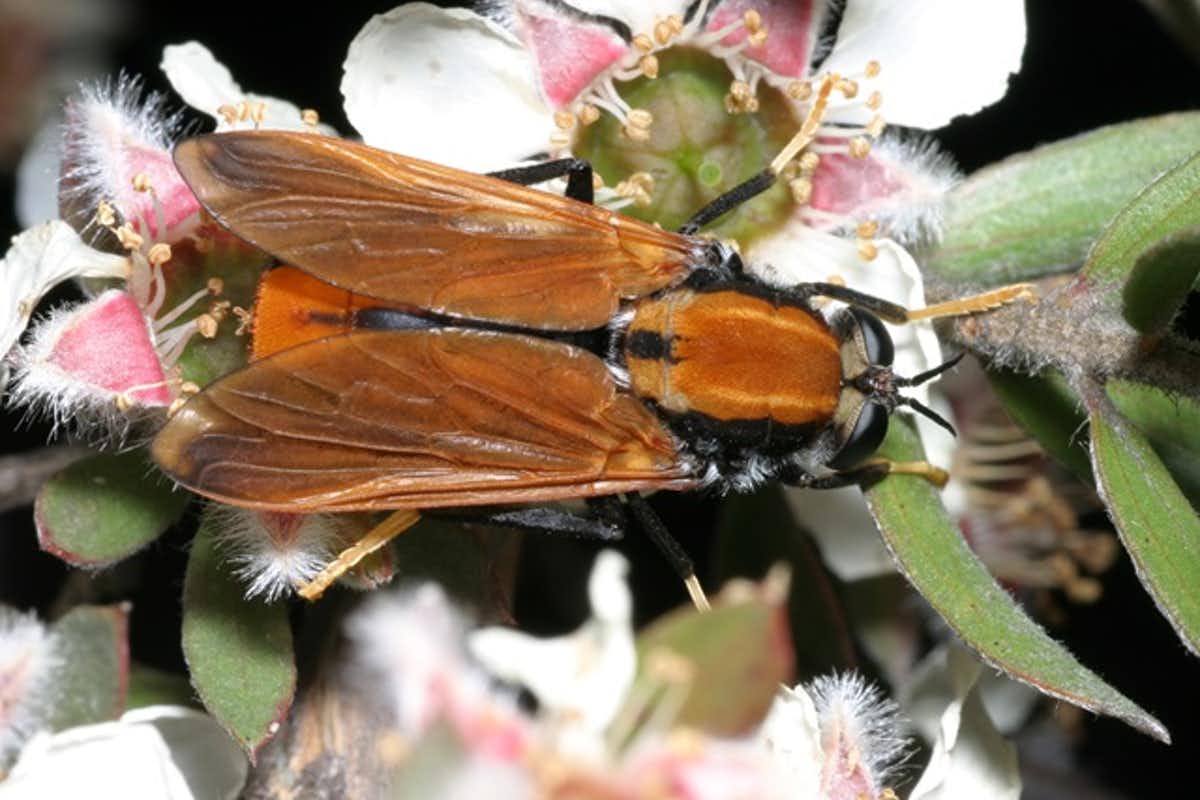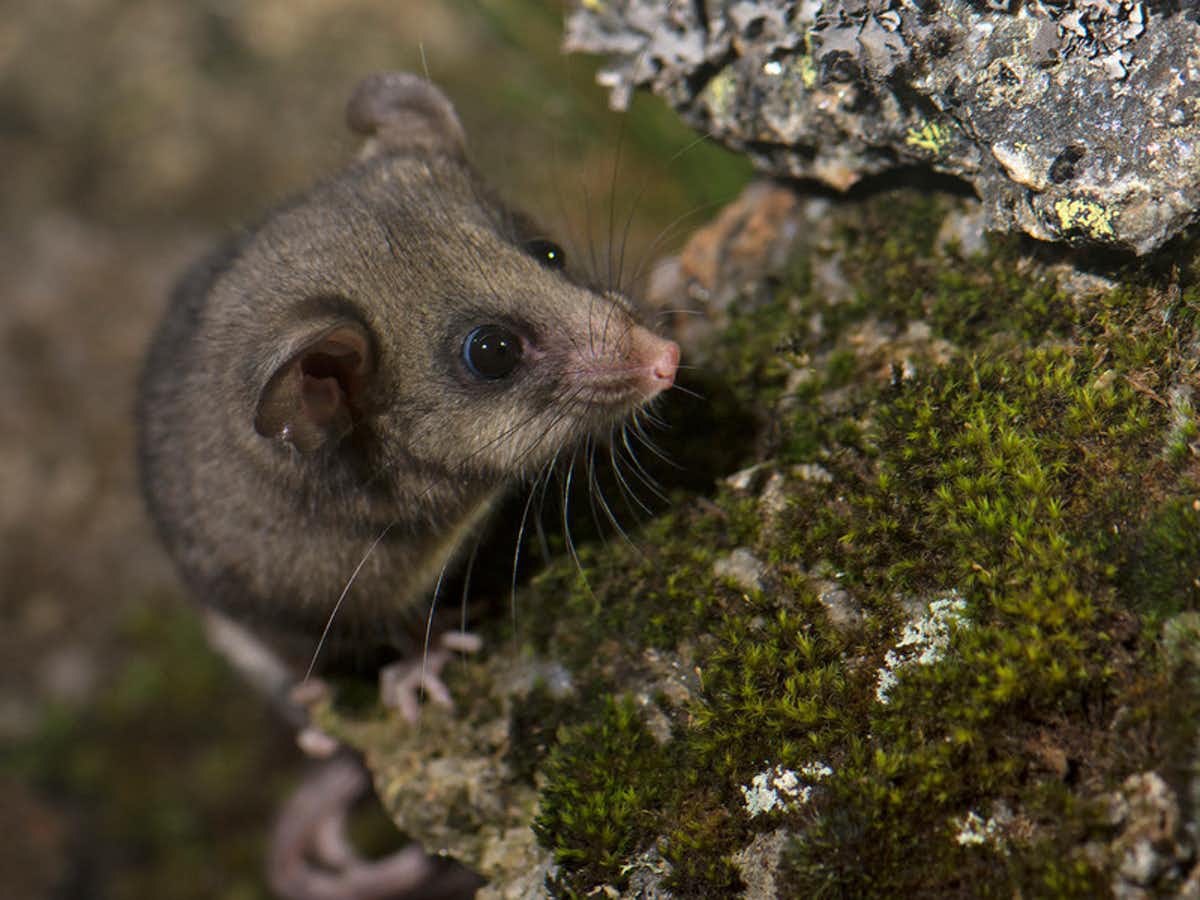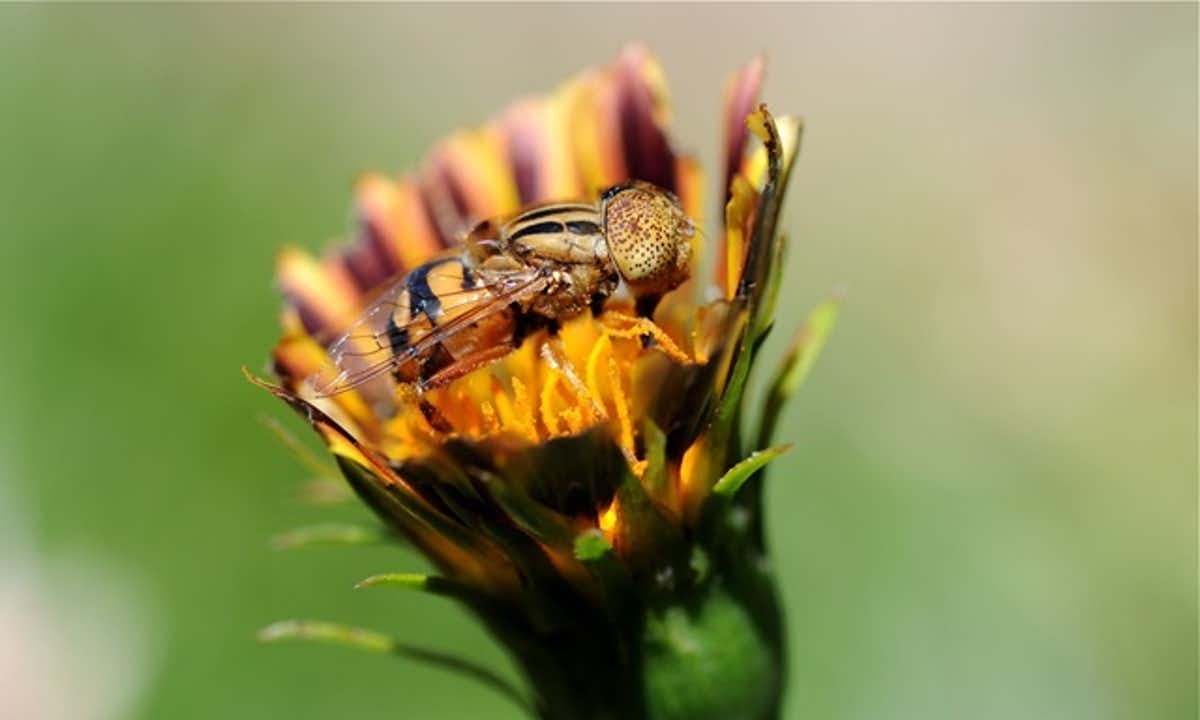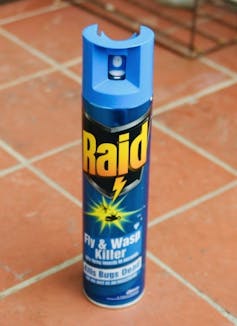Are you planning a big garden clean-up this summer, or stocking up on fly spray to keep bugs at bay? Before you do, it’s worth considering the damage you might cause to the insects we share the planet with.
Australia’s insect populations are under pressure. The problem is better known in the Northern Hemisphere, where over the past few years scientific studies have reported alarming declines in insect numbers.
We don’t yet have a true understanding of what is happening in Australia. This week, scientists gathered in Brisbane at the Australian Entomological Society conference to discuss the extent of the problem. Evidence suggests several species and populations are under threat.
Some might see insects as small and insignificant, but they perform functions crucial to sustaining life on Earth. There are several simple steps you can take to address insect decline in your area, or even help scientists keep tabs on the problem.

A gold wasp. Australian insect declines have not been well documented. Image credit: Oliver Niehuis/Australian Science Media Centre
We need to know more
In Australia, we know iconic species such as the bogong moth, green carpenter bee and Key’s matchstick grasshopper are in decline. There is documented evidence for the extinction of two Australian insect species, but this is probably just the tip of the iceberg.
A research review published this year suggested more than 40% of insect species globally are threatened with extinction over the next few decades. However, this estimate was based on limited studies of a few iconic insect groups in western Europe and the US.
Such findings should be taken with caution. We do not have enough evidence to extrapolate to the whole planet.
Despite this, factors affecting insect populations overseas – such as habitat loss, climate change and insecticide use – most likely also apply in Australia. Bushfires and drought on this continent can also affect insect populations.
There are no published studies documenting insect decline in Australia, but anecdotal reports from entomologists suggest lower than average populations across a number of species. However, very few of our estimated 250,000 insect species are being formally monitored.

A Pelecorhynchid fly. Studies suggest insect populations are declining, but data in Australia is scarce. Image credit: CSIRO Entomology
Why you should care
Insects pollinate plants, dispose of waste and control pests, among other functions. The planet would cease to support life without the services insects provide.
If insect populations are in decline, so are the populations of larger animals such as birds and lizards that feed on them.
In NSW, bogong moths are a staple food for mountain pygmy possums. A collapse in the moth population would lead to possums going hungry, which affects their breeding success.
Australia’s threatened species strategy prioritises action to protect 20 bird species – 14 of which feed partially or solely on insects.

Mountain pygmy possums feed on bogong moths. Image credit: Tim Bawden
Six ways to help insects
Insects are small and can inhabit hidden places, so you may not realise how many exist around you. Here are a few ways to help prevent insect decline in your home and elsewhere:

A flower fly. Scientists need help form the public to track insect numbers. Image credit: Denis Anderson/CSIRO

- Entice insects to your garden: Lawn is a virtual desert for insects, so if you don’t really need it, cultivate insect-friendly native plants instead. Plan to have something flowering most of the year and aim for a variety of plant heights and structures, such as tall trees, thick shrubs and ground cover.
- Put the fly spray away: Insecticides have become very efficient in recent years. They indiscriminately kill all insects, not just the ones you’re trying to get rid of. If you have to use insect spray, do so sparingly. And whenever you can, choose food produced without lots of pesticides. These products are sold with labels such as organic, biodynamic, or chemical-free.
- Turn off the lights: If you don’t need that outdoor light on all night, turn it off: the moths in your area will thank you. Many nocturnal insects can’t resist the light, but it disrupts their navigation system. This plays havoc with their ability to feed and reproduce.
- Build them a home: Think about installing an insect hotel – a small structure of hollows for insects to rest and lay eggs in. Or simply leave dead wood or small areas of bare ground for insects to build nests in. If you don’t have a garden, join a local tree-planting group, or convince your council to plant more natives.
- Resist the urge to clean up: If there is a section of your garden, local park or nature strip that is unkempt, leave it that way. What looks untidy to you is a great place for insects to live.
- Track insects on your smart phone: Scientists need help to better understand what is happening to our insects. Citizen science apps such as iNaturalist Australia, Wild Pollinator Count, the Atlas of Living Australia and Butterflies Australia help gather valuable information about insect biodiversity, so solutions can be targeted to problem areas.

This article is republished from The Conversation under a Creative Commons license. Read the original article.


13th January 2020 at 1:43 pm
Travelling large distances by car, e.g. from Sydney to Victoria, or Sydney to S. Aust through farmlands and forests, the windscreen used to get plastered with various insects. My last trip to Victoria late Dec 2019 the windscreen was almost clean. Now I’m 68, I’ve noticed a huge change over my lifetime. I’ve also noticed the land-clearing, the swathes of canola on the way to S. Aust. – I drove across the Hay plain in 2018 – the increasing heat. It’s not science by any means but these sort of observations can trigger scientific investigation. The insecticide use, the monoculture, the heat, fires, the land-clearing, mowing – complex – but I feel it doesn’t augur well for insects. How many species are going before they’re even named by humans?
7th January 2020 at 10:54 pm
Not just 5G. All NON-NATIVE EMFs on the spectrum which includes wireless transmissions and artifical lights at the wrong time of day. Sun goes down for a reason. Chemicals indeed. Permaculture is always the solution.
7th January 2020 at 4:56 pm
I have been photographing invertebrates in the Whipstick Forest (North of Bendigo) for the past 4 years. In the last 2 years I have seen a decline in flying biomass of over 70%. In conjunction with this the loss of vegetation is over 60%. I know it is more complex than this but what cannot be overlooked is the fact that we have been in drought since 1993 (only 5 seasons of average or above rainfall in that time), the last 2 years have had a hot dry summers that has abruptly ended to an extended periods of abnormal cold (from early Autumn to late Spring). My belief is that the symbiotic fungus that brings the bush to life has not ‘come to life’ or has died (because of the lack of moisture and temperature). The plants have not flowered (to their normal extent) and the seasons are too cold for insects to appear. I would estimate that about 100 species of insects either have not appeared or have been too few to be easily for the last 2 Spring/Summer periods.
The areas that I am involved with are quite large and remote, the direct influence of human activity (insecticides etc) would be minimal at worst.
ps. The common Crane Fly (Leptotarsus sp.) was in plague proportion this season.
19th December 2019 at 3:08 pm
5G?
https://sciencepost.uk/2019/05/5g-loss-of-insects/
6th December 2019 at 6:14 pm
I think it a very sad situation because if we lose the insects there will be nothing to pollinate plants and that includes food for humans.